Can’t Detect Movement of the Globe?
The globe earth theory proposes that the earth is moving very, very fast through the galaxy in many different directions simultaneously. It may be OK if the earth was just moving in one direction without any acceleration. But if you have an object rotating and moving in different directions simultaneously that creates forces which we can fell and measure.
We can not detect any Movement of the Earth
The problem is on earth we are unable to detect any movement of the planet. If the location of the earth is actually constantly changing that should change our view of the stars and we should be able to tell that we are moving. This problem was somewhat addressed by the creators of the globe earth theory by making the arbitrary decision to invent light-year distances and to place the stars so far away that even though the earth is moving through space rapidly compared to the fabulously distant stars the movement of the earth becomes insignificant and therefore we can not detect any movement by looking at the stars.
Movement of the Earth must create Measurable Forces
But all these simultaneous motions in different directions and rotation must combine to exert measurable forces on the earth and objects on the earth. We should be able to measure these forces if the earth is actually moving. But we can not measure any movement of the earth, rather the earth appears to be ‘solid as a rock’ and firmly and permanently fixed in its place.
The following description is from: Ask Ethan
So now we come to the motion of the Solar System through the galaxy.
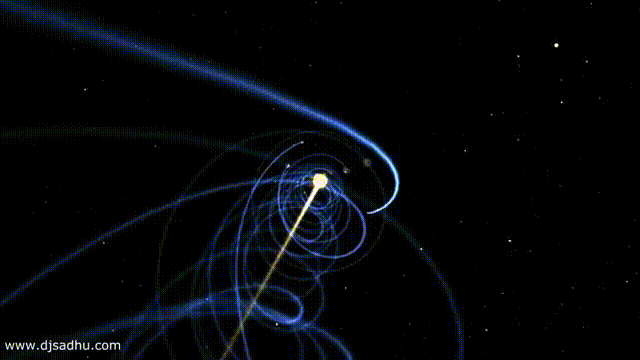
Consider how dishonest so many features of this image are. First off, the planets, at any given point in time, all are actually in the same plane. There is no lag at all, with outer planets farther “behind” the Sun than the inner ones in any sense.
Second off, consider the actual speeds at play here. Mercury — the innermost planet — is the fastest-moving one in our Solar System, orbiting the Sun with a mean speed of 47 km/s. That’s pretty fast; it’s about 60% faster than Earth’s orbital speed around the Sun, nearly four times as fast as Jupiter and some nine times as fast as Neptune, which orbits at a paltry 5.4 km/s. Meanwhile, the Sun moves through the galaxy at a speed of 220 km/s.
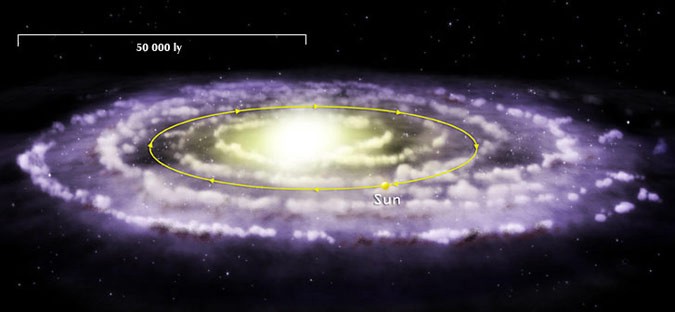
In the time it takes Mercury to make just one revolution around the Sun, the entire Solar System has moved an incredible 1.7 billion kilometers through space, in its relentless orbit around the galaxy. Keep that in mind for scale; the entire Solar System — including the Sun and every one of the planets — moves 1.7 billion kilometers along an ellipse in the plane of our galaxy every time the planet Mercury, the fastest planet in the Solar System, makes one orbit. And at that, Mercury’s orbit has a radius of only 58 million kilometers, or just 3.4% of the amount that it — and all the planets — moves along with the Sun.
If we scale out the motion of the Solar System around the galaxy, and look at how the planets move to scale, this is what we’d see.
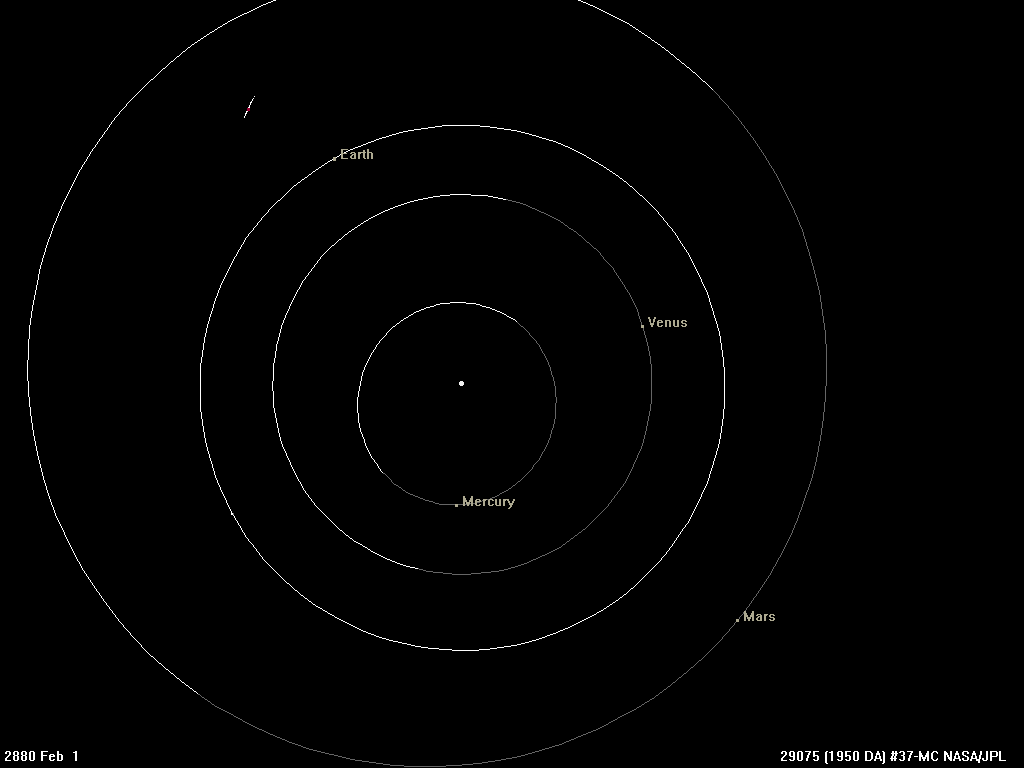
So imagine this whole system — the Sun, all the planets, the asteroids and comets, too — moving at very large speeds at an angle of about 60° with respect to the plane of our Solar System. That would be an accurate representation of our motion. More like this:
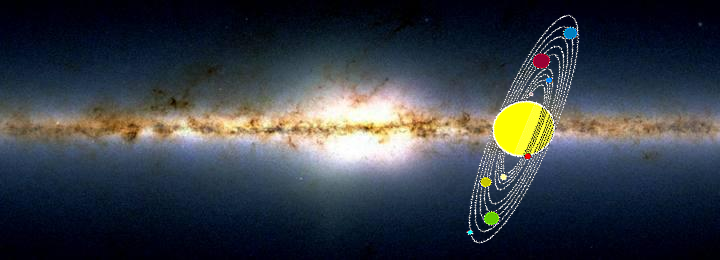
Combine all that together, and you get this much more accurate picture, courtesy of Rhys Taylor.
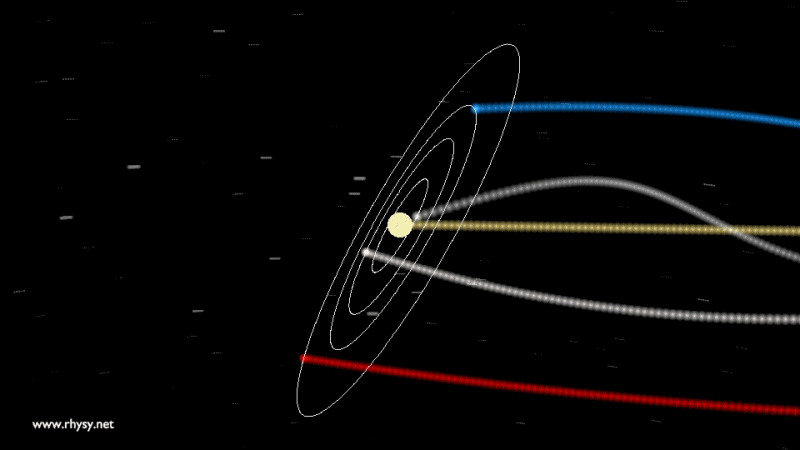
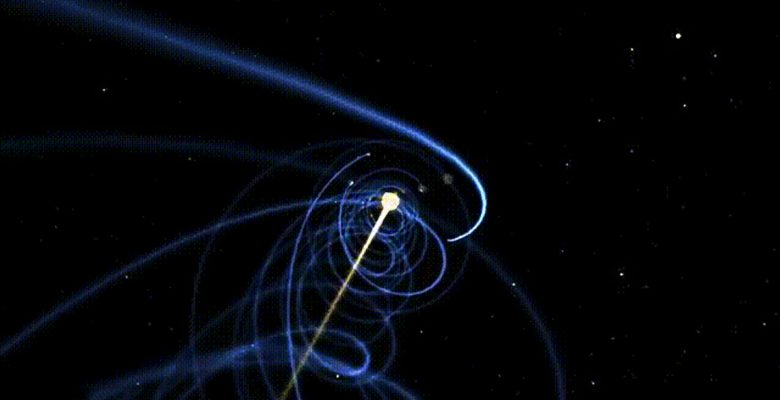
Yes, we cannot detect movement of the earth, and that is a serious flaw of a “spinning + revolving earth” model, but not so much of a globe model.
I was thinking about this, and John Smith’s YouTube video at https://www.youtube.com/watch?v=evYjtXWTDt0&list=PL50VqWgr-XoE-01s_Kld9uNZX4LXgNP0V&index=2&t=0s made me do that deeply. Scientists say that we are not only rotating but also revolving around the sun. They say we would feel it because we move at constant speed around the sun. It is true that we will not feel movement if we were at constant speed, no matter how high the speed is – as long it is constant. It requires an acceleration (change of speed) to feel the motion.
However, when we are moving (in orbit around sun) AND spinning, we are not really at constant speed – that the scientists are hiding. Our speed IS continuously changing at all times because of the combined translation and rotation – we should be able to feel at least gripped by earth at some times of the day, but we don’t.
Also, it is OK for water and atmosphere to go about this spinning and rotating – and still get stuck to earth due to gravity and move on. However, it is not so for us sentient human beings. We would definitely complain if our speed changes. Water, atmosphere, they can’t complain. But we would.
So, it is a serious flaw of the “spinning+revolving” earth model.
Please correct “They say we would feel it” to “They say we would not feel it”.